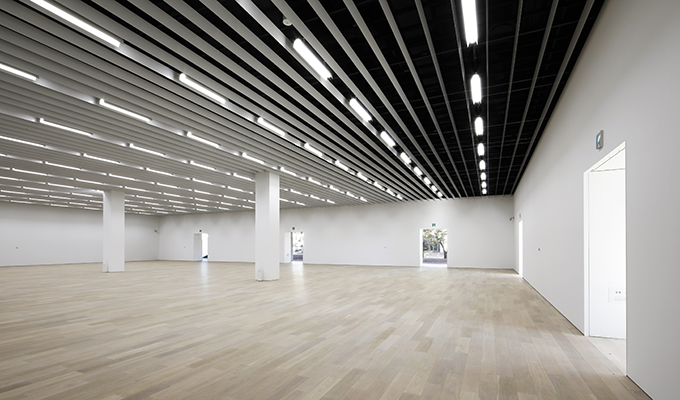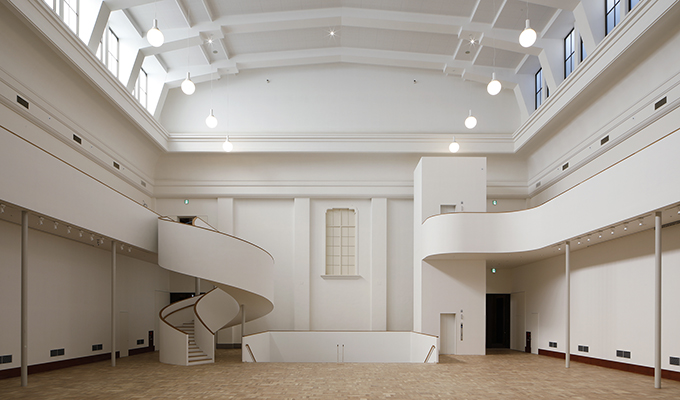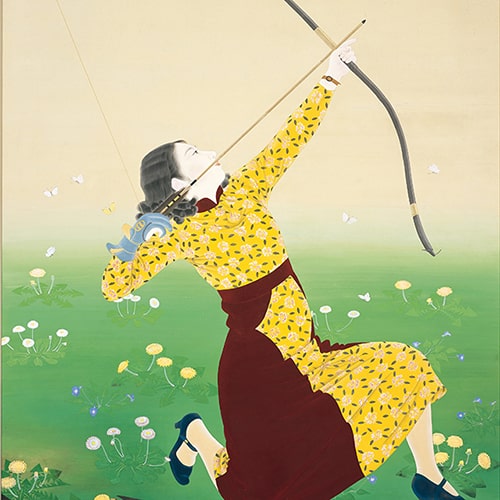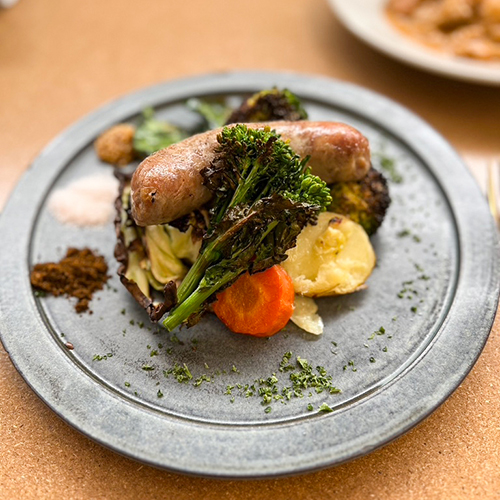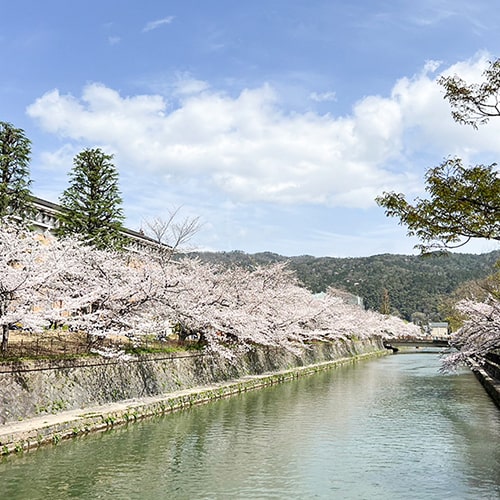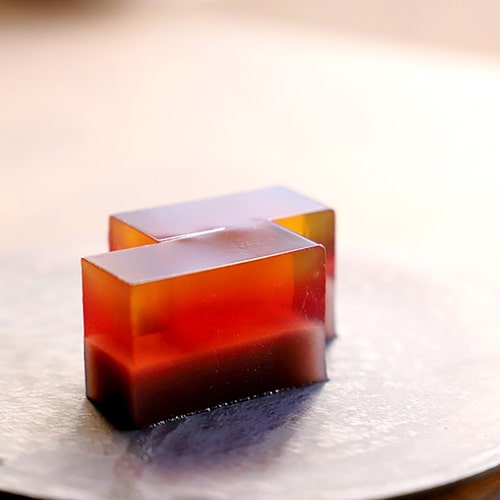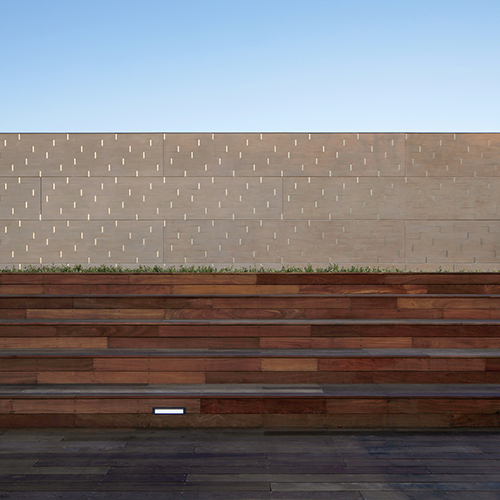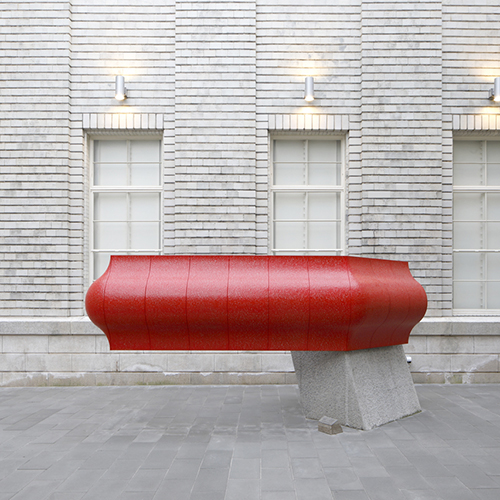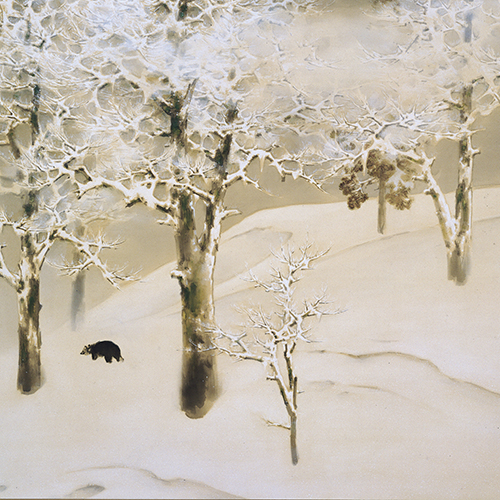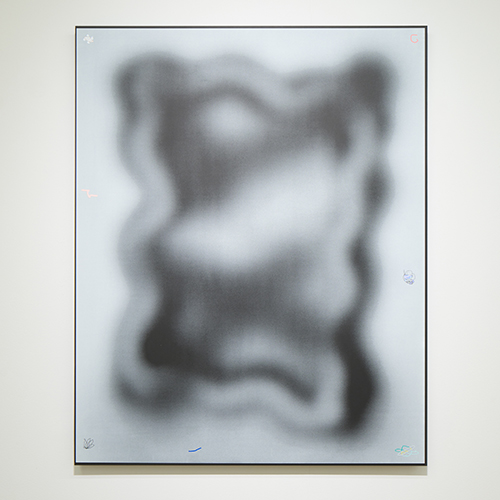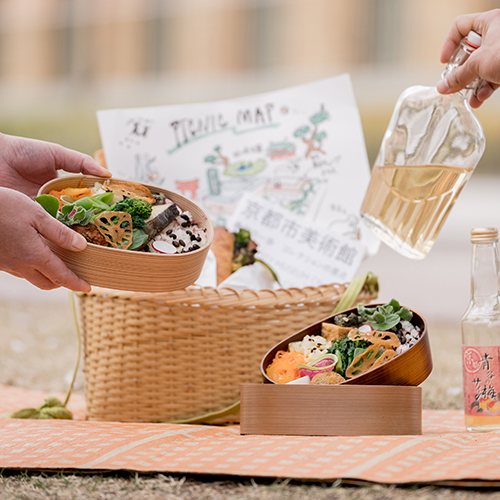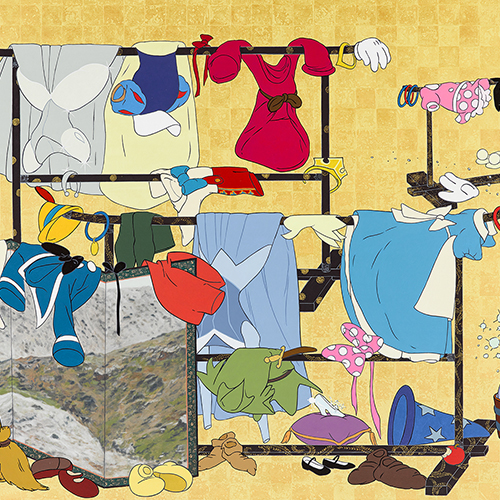[2021 Winter] Collection Room
2021/12/11-2022/3/26
Venue [ Main Building(South Wing)1F ]
-
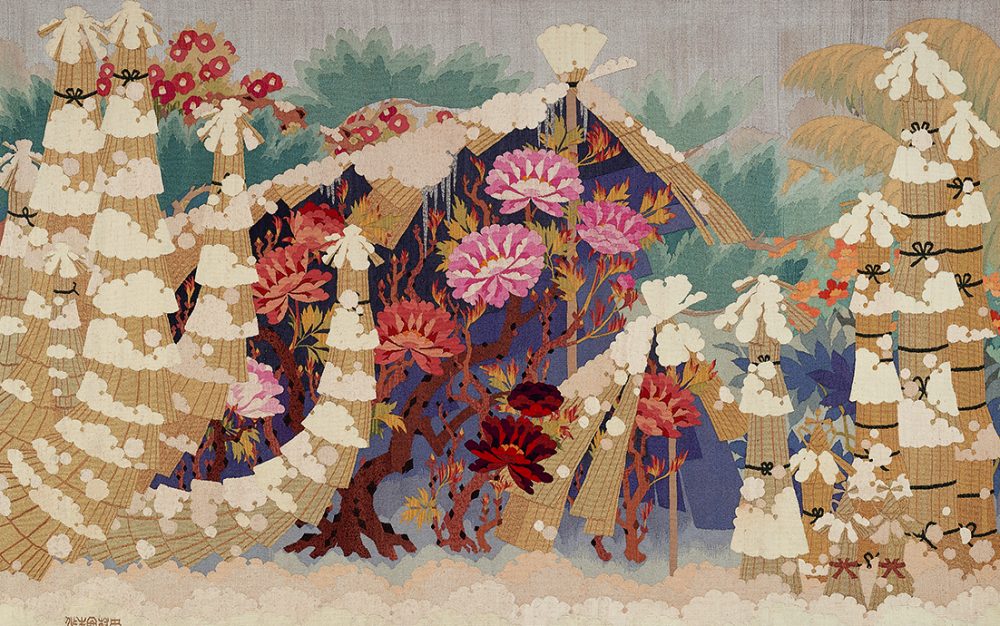
Nakamura Hosei Wall Hanging of Teorinishiki (Handwoven Brocade) of Winter Peonies 1936
Collection of the museumThe Museum has been acquiring Kyoto modern art since its inauguration in 1933, and currently has holdings of over 3,800 artworks comprised of a core of Japanese paintings along with Western style paintings, sculpture, prints, crafts, and calligraphy.
The Museum is particularly proud of its highly regarded collection of paintings by Meiji and Showa period Kyoto artists. Introducing paintings with seasonal themes in tandem with the changing seasons, the Museum gives viewers a rich sense of the seasons in Kyoto.
A feeling of summer in the early Showa period can be gleaned from works such as Kitano Tsunetomi Sisters of a Merchant Family, depicting a hot summer evening conversation in a garden, and Showa period oil painter Nakamura Ken-ichi’s The Seto Inland Sea of Japan.
To give a feeling of activities from midwinter and early spring, this exhibition features works such as female painter Kitazawa Eigetsu’s Bright Kimono, depicting girls preparing their spring kimonos, and Nakamura Hosei’s humorous winter peony brocade tapestry of plants wrapped in protective covering for the winter.

Nakamura Hosei Wall Hanging of Teorinishiki (Handwoven Brocade) of Winter Peonies 1936
Collection of the museumInformation
- Period
- Dec. 11 (Sat.), 2021 – Mar. 26 (Sat.), 2022
- Venue
- Main Building(South Wing)1F
- Admission
- Collection Room Admission fees:
Kyoto City residents: ¥520*
Non-residents: ¥730
Groups (of 20 or more): ¥620
Elementary, junior high and high school students: Free**
Non- resident elementary,
junior high and high school students: ¥300
Groups: ¥200
Children under elementary school: Free
*Admission is free for residents over 70 (with valid ID or senior boarding pass) and for those with disabilities (with valid disability certificates). Admission is ¥100 for students attending Kyoto universities registered as Kyoto City Campus Culture Partners.
** living or studying in Kyoto
Please bring a valid ID.
-
A Silent Picture

Konoshima Okoku, Winter Moon (detail)
1912 Collection of the museumIn Japanese art, there is a phrase used to express beauty that says “a silent picture.” This phrase was introduced in the book of compiled comments of the Momoyama period painter Hasegawa Tohaku, commonly called TOHAKU GASETSU (Tohaku’s Explanation of Painting). It was used by Mizuochi Sokei, a tea master of Sakai, in praise of a painting drawn by a Chinese painter called Liang Kai, which had willows and birds. In TOHAKU GASETSU, the pharse “a silent picture” was praised as an excellent expression and from then on, this sense of beauty became one of an ideal to aim for in Japanese art.
This chapter is a special edition of Japanese-style paintings which embodies “a silent picture.” Take notice to the tranquility that surrounds the painting, and the rendering of the snow, fog, air, and the winter atmosphere.
Konoshima Okoku, Winter Moon (detail)
1912 Collection of the museumScenes of a Foreign Country
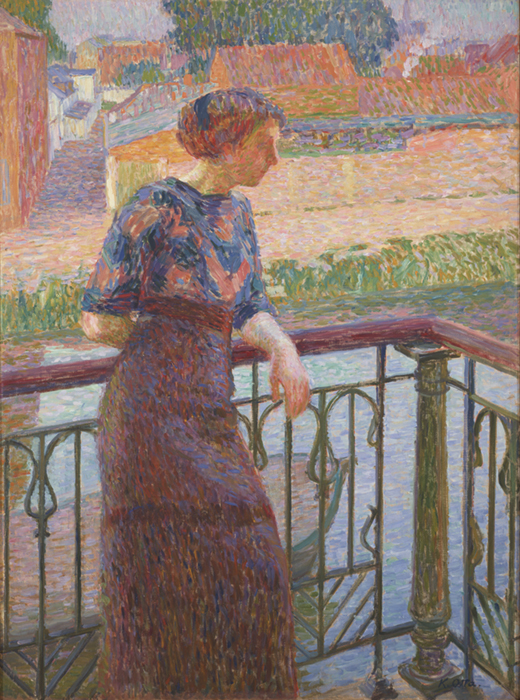
Ota Kijiro, Woman on the Balcony
c. 1911–1912 Collection of the museumFrom the Meiji to Showa period, many painters traveled overseas. Their destinations and purpose vary in numerous ways and changes as time goes by. Being in a foreign country with aspiration and hope, introduced and stimulated to new climates and cultures different from Japan, gave an opportunity for traveling painters to look back on themselves. As a result, what the travel brought varied; as some established new expressions, some recognized their own path, and some got stuck in a slump. There were also those who repeated visits being fascinated by a particular country. The paintings influenced by foreign countries, one by one, show the painter’s thoughts and interest, making it into valuable works. The state of being fascinated by beautiful nature, townscape, new seasonal things, may be something that we too can understand in the present. Please enjoy these works as if you were a traveler yourself, and feel the foreign countries seen and depicted through the painter’s eyes.

Ota Kijiro, Woman on the Balcony
c. 1911–1912 Collection of the museum -
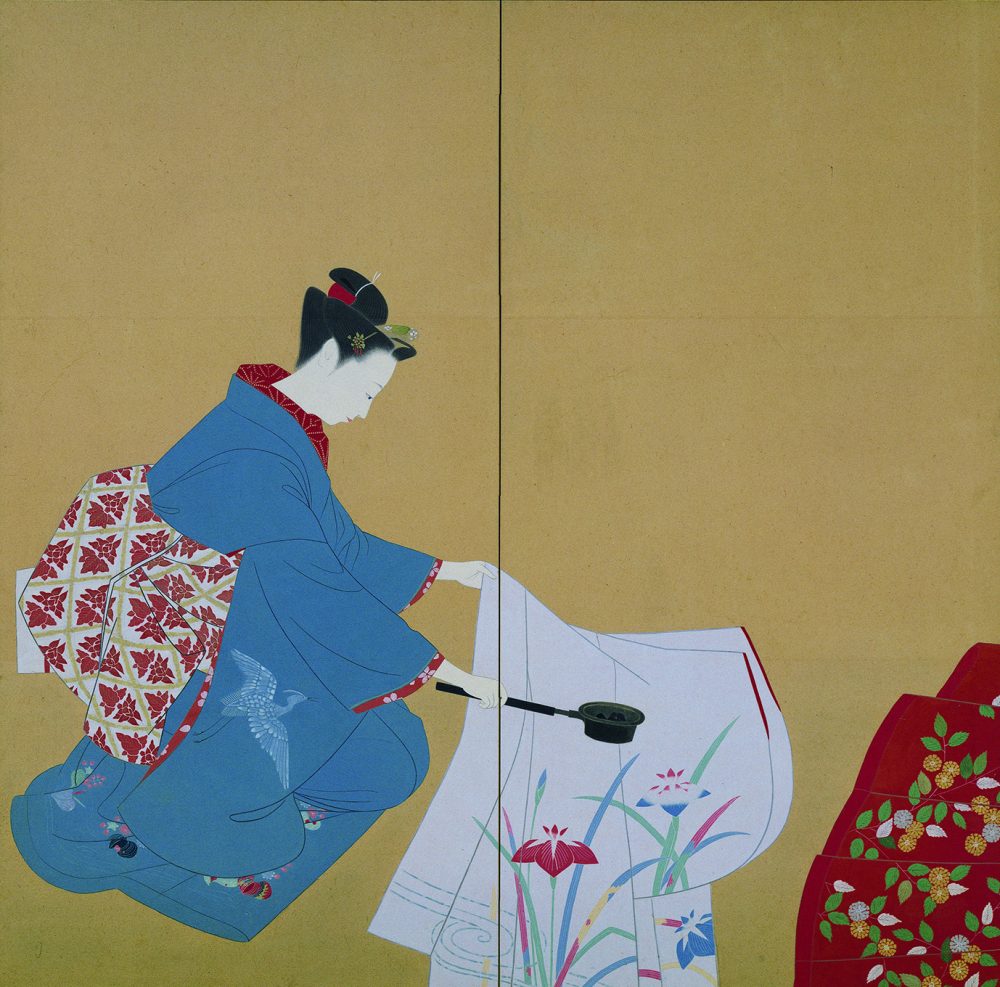
Bright Kimono (left panel) 1940 Kitazawa Eigetsu Collection of the museum
On exhibit from Winter: Dec. 11, 2021 – Mar. 13, 2022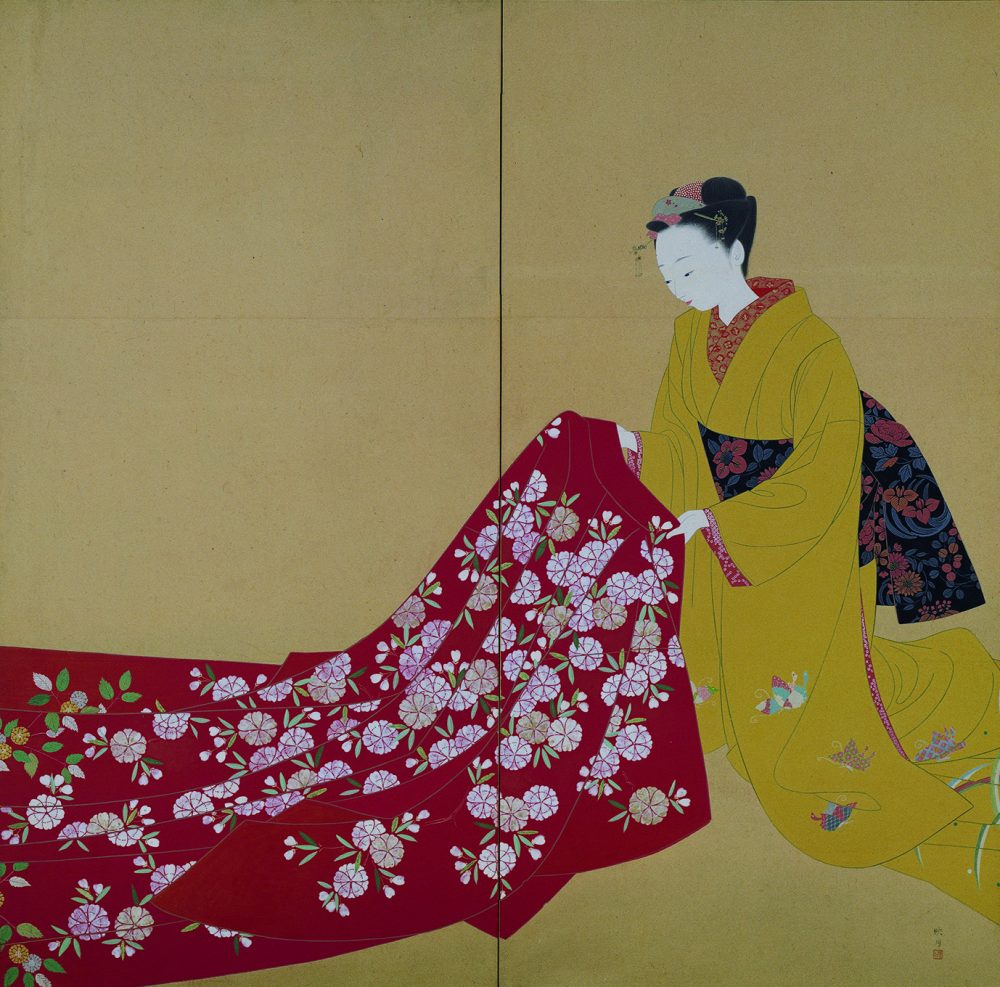
Bright Kimono (right panel) 1940 Kitazawa Eigetsu Collection of the museum
On exhibit from Winter: Dec. 11, 2021 – Mar. 13, 2022
Nakamura Hosei Wall Hanging of Teorinishiki (Handwoven Brocade) of Winter Peonies 1936 Collection of the museum
On exhibit from Winter: Dec. 11, 2021 – Mar. 13, 2022 -
Museum Cafe
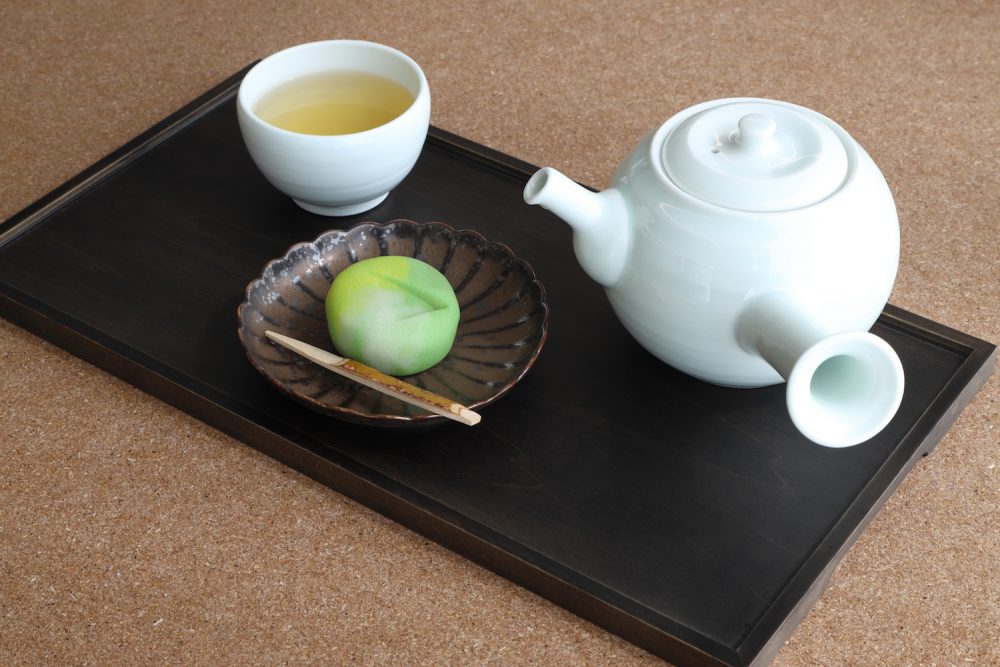
Roasted Green Tea Set ¥1050 (including tax) Photo: Maetani Kai The menu of seasonal sweets in Cafe ENFUSE will change four times a year, along with the seasons. Also the museum shop will continue offering new confectionary selections twice a month, every month in 2021.

Roasted Green Tea Set ¥1050 (including tax) Photo: Maetani Kai Museum Shop
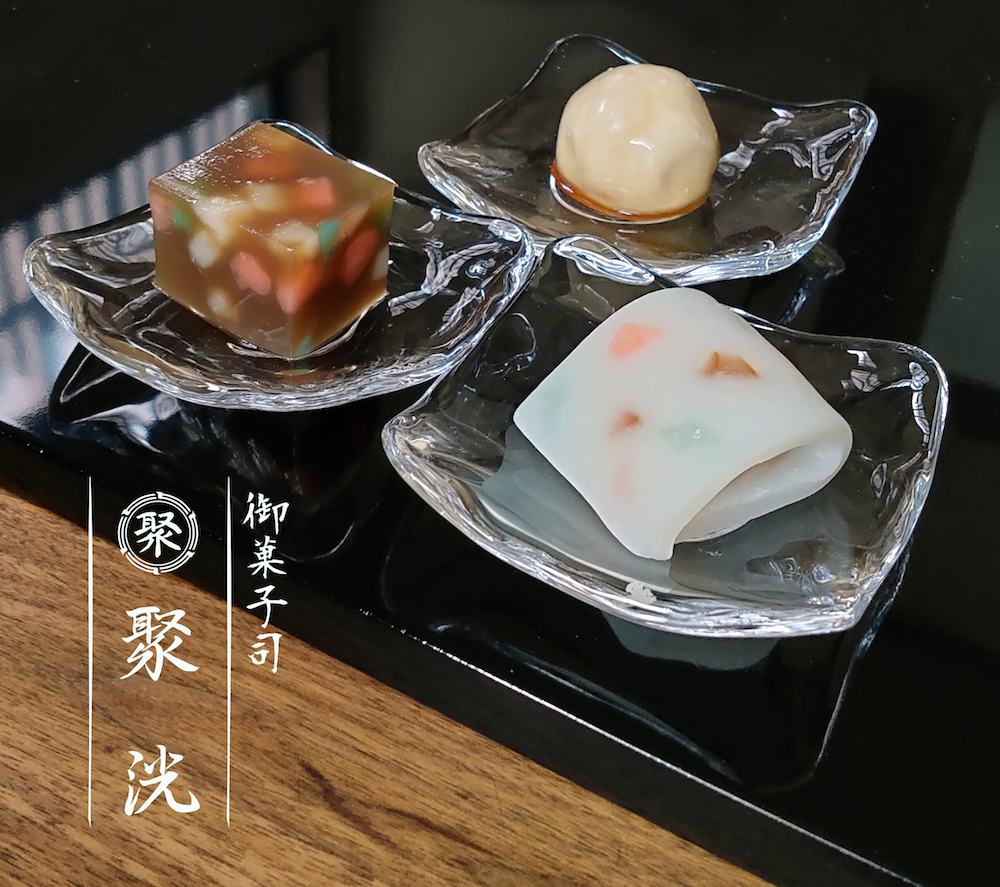
August 2020 featured Japanese sweet on a motif of nihonga painter Takeuchi Seiho. It is an example of the series of sweets inspired by motifs of the museum collection. 
August 2020 featured Japanese sweet on a motif of nihonga painter Takeuchi Seiho. It is an example of the series of sweets inspired by motifs of the museum collection.

